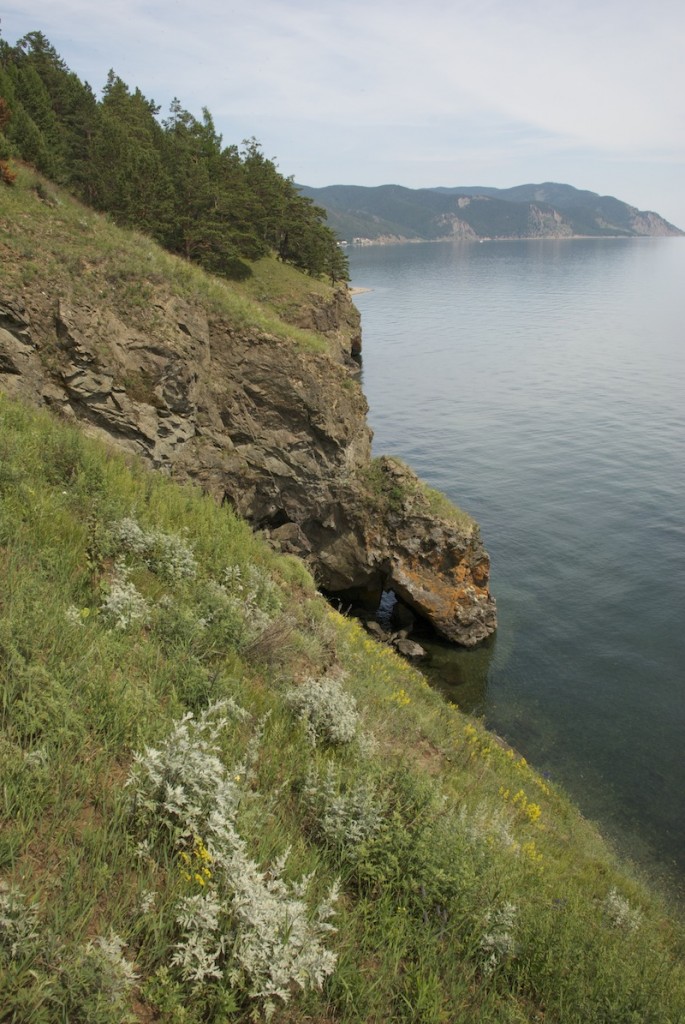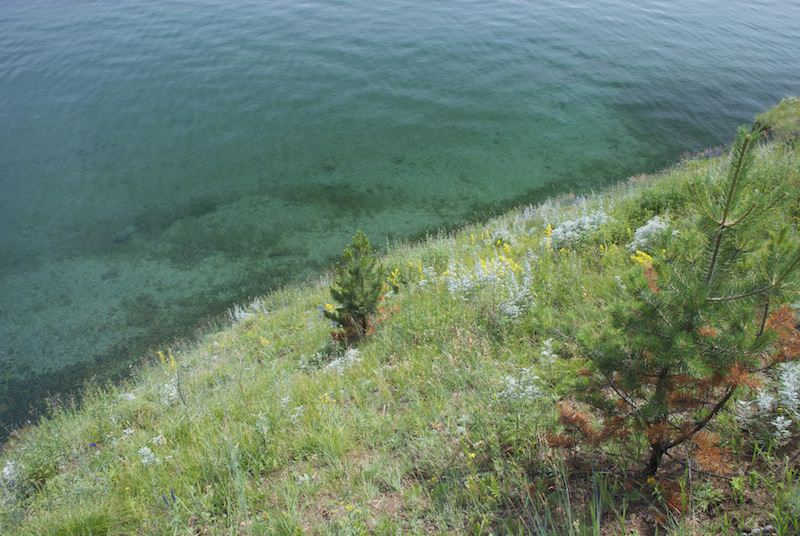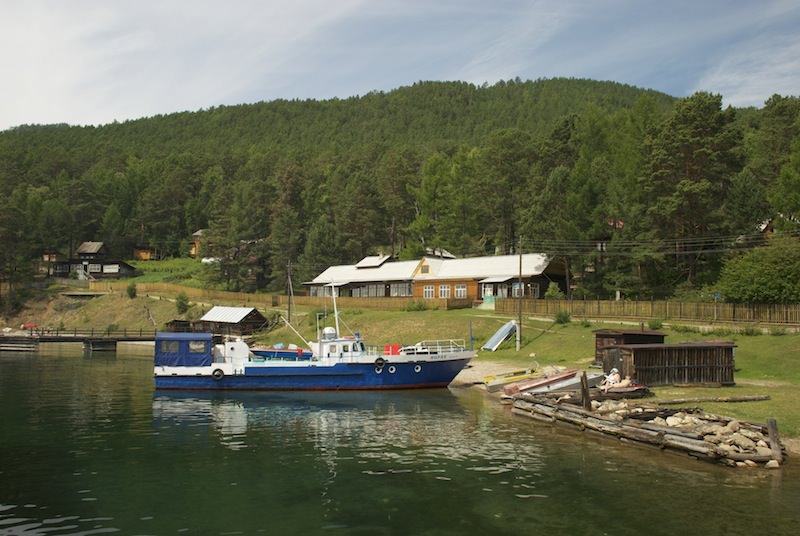Trans-Siberian travelers look forward to Lake Baikal. It’s the gleaming jewel in the center of Siberia, the necessary stop on the long rail journey. Everyone encounters a different version of the lake, which shifts identities depending on the desires of its visitors: Lake Baikal can be an outdoor adventure, holiday destination, ecological marvel, and spiritual retreat.
The world’s oldest and deepest lake, Baikal holds one fifth of earth’s unfrozen fresh water. Endemic species like the nerpa, the only known freshwater seal, give it a unique biodiversity. In winter, the lake freezes over, and trucks and cars cross on an ice highway.
Most Trans-Siberian travelers approach the lake from Irkutsk. The pretty Siberian city does not actually sit on the lakeshore; to reach the water, visitors must take a bus or minibus from the Irkutsk station. The ride takes about 45 minutes, plus or minus a lengthy wait at the bus station.
Buses from Irkutsk stop in Listvyanka, a popular summer destination for Siberians. The lakeshore here has a pebbly beach, market, several small hotels, and ferries across Baikal. A bit of shabby commercialism hangs over Listyvyanka – New Age trinkets hawked on the boardwalk and, at least in summer, plenty of people getting drunk on the beach. Because the water is so cold, not many are brave enough to go swimming – although sneaking up and dumping Baikal water on an unsuspecting sunbather seems to be a favorite activity. Beyond, the lake beckons. Water slips up over the rocks, shaken by passing boats; beyond, it rests quietly in its immense basin. Purplish mountains score the white-blue summer sky.
Quieter destinations are a boat ride away. A seven-hour hydrofoil arrives at Olkhon Island, midway up Baikal’s western shore. The remote island has a few accommodation options, but most visitors bring tents or stay in yurt camps. Olkhon attracts nature-lovers, travelers interested in solitude, and an annual neo-shamanic gathering. The isolated, rocky shoreline is miles away from the cramped quarters of the Trans-Siberian.
For hikers, the Baikal lakeshore offers miles of traipsing. Environmental non-profits are building a trail system around the lake. They aim to enhance appreciation for the area’s natural beauty, promote eco-tourism, and educate visitors about the local environment. Visitors can volunteer with the NGO – The Great Baikal Trail, clearing trails or working on one of their ecology education programs.
Even if you only have a day, hiking a small, completed portion of the trail reveals the natural beauty of the area. We took a hydrofoil to the tiny village of Bolshiye Koty, about 18 kilometers from Listvyanka, and hiked back along the shore. The trail rose precipitously along cliffs, dropping off down into the water, and meandered through forest. We passed through campsites and stopped for lunch in a grassy meadow, sitting on logs overlooking the lake. The coniferous forest and cool, fresh air recalled parts of America’s Pacific Northwest.
For those who haven’t had enough train travel by this point,the Circum-Baikal Railway chugs slowly along Baikal’s western side. The rail winds through stone cliffs from the town of Slyudyanka to Port Baikal. Some tourists use the experience as an excuse to drink heavily in a historical train car; the more active disembark for hiking and exploring at various points along the shore.
Travelers coming from the east often approach Lake Baikal from Ulan-Ude. The Republic of Buryatia, one of Russia’s semi-autonomous regions, hugs the eastern side of the lake; Ulan-Ude is its capital city. Because it has few facilities for foreign tourists, the area offers the best chance for a secluded, local experience. If you plan on traveling to the lake from Ulan-Ude, some knowledge of Russian might be useful.
Lake Baikal is also the fork in the road. A few hours to the east of the lake, the tracks split. Trans-Siberian travelers must make a decision: continue eastward toward Vladivostok, or dip south, into the heart of Asia.
Written by Caitlin Dwyer and photos by Matt Bozigar for EuropeUpClose.com





